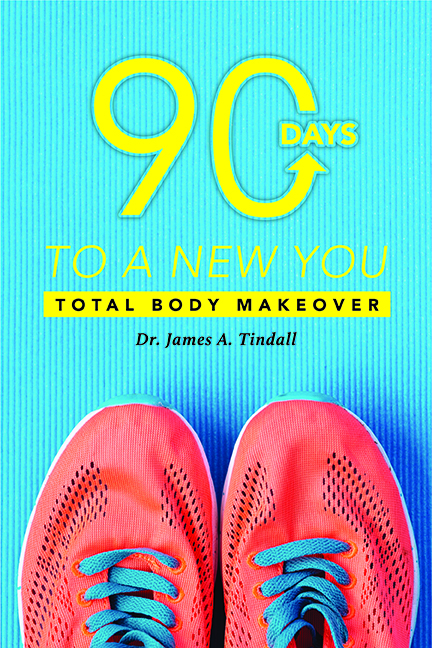Aerobic or Anaerobic? Is running best for you? What about weight training or maybe tennis or even sprinting? How do you know what exercise to choose?
You’re in the gym for another workout, sweating away, listening to two people next to you involved in an earnest discussion about what kind of exercise is best and which one burns the most calories. For some reason, there seems to be great controversy about this. Is there only one answer?
To lose weight, you need to burn calories at a greater rate than you consume them. Many will tell you there are aerobic or anaerobic calories, but calories are calories, so this is an incorrect statement. The terms aerobic and anaerobic refer to categories that various exercises fit into based on, in simple terms, the oxygen pathway in the body.
Aerobic exercises consume calories as your body breathes in or utilizes oxygen. As a rule of thumb jogging, running, biking, walking, and similar exercises fall into this category. These exercises and other low-intensity activities begin to burn excess calories and fat after about 40 minutes. Because of this it is considered that long-term, low intensity exercises are the best at burning fat, but is that true? More on this later. When your exercise intensity becomes greater than the rate at which your body can supply oxygen, you have shifted into the anaerobic category. Typical exercises in this category are sprinting, weight lifting, and other high intensity training regimens – these are short-term activities.
Advertisement: Amazon (click on photo for more info)

Factually, any exercise you perform will burn calories. To burn more calories, you need to increase your intensity and/or duration of your workout. Then why the argument about anaerobic versus aerobic? It boils down to the effect on the cell, which I’d like to make an analogy about so we can keep this discussion simplified.
Assume that individual cells in your body are like the gas tank on a car, only you have many more ‘tiny’ gas tanks. To go anywhere you need to put gas in your tank. When your tank is empty, you cannot travel any further. If we transfer this basic scenario to your cells, your cells are filled with glycogen, which is like the gasoline in your car tank. This is the energy that you need to exercise. However, the kind of exercise you do has a significant effect on the glycogen, i.e., fuel level in your cells. This is why the constant discussion between exercise types.
Let’s compare two exercises, one that fits into each category. First, we’re all familiar with jogging. As we jog, the energy in our cells, i.e., the glycogen, begins to become depleted or to empty, just like the gas in your car tank. As we continue the exercise, the cells will eventually run out of gas (glycogen). At that point in time, there is no longer enough energy in the cells to recover or to continue to fill the cells with glycogen since it takes awhile for the body to complete the restoration cycle. Thus, you have essentially run out of gas. However, you can keep exercising and many do. Because the cells are now emptied of glycogen, the body looks for other sources of energy to burn. Generally, the easiest form or energy to utilize is protein. As a result, the exercise you’re doing begins to force the body to attack protein sources to satisfy it’s need for energy. These protein sources are generally your muscles. The result is that if you run too much or perform any long-term, low-intensity exercise for more than about 60 minutes at a time, you will actually deplete your muscle mass.
Second, let’s consider sprinting, which is an anaerobic activity. It’s a high intensity, short-term exercise. It’s effects on your cells are different. When you sprint, the glycogen level in your cells rapidly deplete/empty, but since you must rest for a little after each hard sprint, the glycogen level restores itself quickly. This process will continue over and over as you do your sprints. Your little gas tanks, i.e., your cells, will empty and then refill while you rest. It takes about 20-30 seconds generally to replenish the glycogen, longer if you’re out of shape.
After about 20-40 minutes of total sprinting time, not counting your rest periods, the glycogen in your cells cannot recover and you’ll then be at the same state as in the jogging example discussed above. What’s the main difference? By performing anaerobic activities for long term, your cells become depleted of glycogen and cannot recover. You’re running on fumes and you need energy. Come on, you’ve done this with your car before, haven’t you? Consequently, protein energy sources are sought, which generally results in muscles being cannibalized for energy and therefore, muscle mass is lost. With anaerobic activities, the same process occurs. But, after 20-40 minutes of total exercise not counting rest periods, one is usually too tired to go on. Since you stop, although the glycogen in your cells is gone, you do not force the body to seek further energy and thus, you preserve muscle mass.
Advertisement: Amazon (click on photo for more info)

The best examples I can give you of this is to ask you to compare a marathon runner to a track and field athlete. At first glance you will notice that marathon runners and other long distance runners have a relatively slender build with minimal muscle mass except in the legs. In contrast, the track and field athlete has a very muscular physique. The difference in training has resulted in this stark contrast. Does this mean that you shouldn’t run and only sprint? Certainly not! But, you need to decide what your goals are when you plan your exercise program. The best way is to incorporate both activities into a well-rounded program. Despite this there are some guidelines.
If you wish to build and maintain good muscle mass, do not run over 3-5 miles per day in your program. If you wish to maintain lots of muscle mass, concentrate primarily on sprinting type activities and do not run over 3 miles per day. The important point is not that one form of activity is better than another, but that you must make a choice on what you want to accomplish with your fitness and physique goals.
Before I end this, I’d like to create at least a little controversy. Have you ever heard, “It’s pretty obvious that to lose the maximum amount of fat, you must concentrate on aerobic activities rather than anaerobic activities?” If you haven’t you will. Is this true? No! Actual statistics kept on sports athletes show that track and field athletes average 1-3 percent less body fat than marathon runners. Why? The answer is simple and one that you have heard and will continue to hear many times. “The best way to burn fat is to build lean muscle mass and eat a balanced, nutritious diet!” That’s exactly what track and field athletes do. It’s not that marathon runners and those who do similar types of training don’t, it’s simply that when they perform exercise for so long, the body cannot supply the necessary energy and muscle mass is cannibalized as needed for the duration of the exercise, i.e., running 10 or more miles per day.
Next time you’re in the gym go outside and try some sprinting. Afterward, finish up with a bike or swim. You’ll get the best of both worlds and be glad you did. Have a healthy and happy day.






